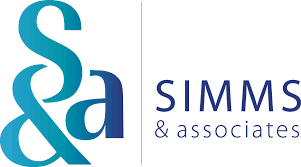In my 30 years of experience in workforce management, gained from roles at companies such as Sainsbury’s, BP, and UKG, I have been involved in numerous successful – and some less successful – workforce management (WFM) projects. Through these experiences, I have identified several key considerations crucial for starting a WFM project. Whether you are leading a small startup or managing the complexities of a large enterprise, embarking on a WFM project requires meticulous planning and preparation. To lay the groundwork for success, it is essential for customers to be thoroughly equipped and prepared for the journey ahead.
Here are my ten essential considerations to ensure customer readiness when initiating a Workforce Management project:
1. Clear Objectives
Before embarking on any workforce management project, it’s important to define and fully understand your objectives and key deliverables. Whether it’s enhancing scheduling efficiency, fostering employee engagement, streamlining costs, or empowering your management teams with effective leadership tools, having clearly defined and achievable goals is paramount. These objectives will guide you throughout the project lifecycle and should be revisited at key decision points.
2. Stakeholder Buy-In
Gaining the support of key stakeholders is crucial for project success. From executives to frontline staff, securing buy-in early on is essential. Engage stakeholders, address concerns, and clearly articulate the benefits of the project to ensure unwavering support and alignment. Maintaining a clear communication strategy underpins this engagement throughout the project lifecycle.
3. Programme / Project team
Establishing and setting up your programme / project team roles and responsibilities (RACI) internally and within the overall delivery team will set you up for success from day one. Define your team structure, alignment, and availability to deliver activities according to the agreed plan. Having the right skill set and knowledge base will support smoother project delivery within time and budget.
4. Technology Infrastructure and Data
Evaluate your current technological infrastructure to ensure it aligns with the requirements of your workforce management project. Consider factors such as scalability and integration capabilities with your chosen WFM software solutions. Access to accurate and comprehensive data is fundamental for effective workforce management. Ensure that all relevant data used for forecasting, scheduling, and performance metrics is readily available and well-organised. Upholding data integrity and security builds trust and ensures compliance with new practices.
5. Process Alignment
Aligning workforce management initiatives with existing business processes is essential for seamless implementation. Evaluate current workflows, identify areas for improvement, and adapt your internal processes and WFM solutions to fit your organisation’s unique needs, compliance requirements, and workflows.
6. Change Management Strategy
Implementing WFM solutions often requires significant changes in workflows and roles. Develop a comprehensive change management strategy to facilitate a smooth transition. Provide training, resources, and ongoing support to cultivate adaptability and minimise resistance within your organisation.
7. Performance Metrics
Establish key performance indicators (KPIs) to measure the progress and effectiveness of your WFM project delivery in terms of time and cost. Define ongoing business metrics aligned with your objectives, from forecasting accuracy to workforce utilisation and schedule adherence. Monitor these metrics rigorously to gain insights and inform decision-making, demonstrating return on investment (ROI).
8. Regulatory Compliance
Ensure that your workforce management project complies with relevant labour laws, regulations, and industry standards. Stay informed about regulatory changes, including employee scheduling laws and data privacy requirements, and adjust your WFM practices accordingly to mitigate legal risks.
9. Flexibility and Adaptability
Flexibility is essential for effective workforce management. Infuse your strategies with agility to accommodate changing business dynamics, seasonal variations, and unforeseen disruptions. Utilise WFM tools and techniques that enable real-time adjustments and optimise resource allocation.
10. Continuous Improvement
Workforce management is an ongoing process of refinement. Foster a culture of continuous improvement where feedback is valued, and innovation is encouraged. Regularly review WFM processes, seek input from stakeholders, and iterate to enhance efficiency and effectiveness.
In conclusion, launching a WFM project requires thorough preparation and proactive planning. By addressing these ten key factors for customer readiness, organisations can establish a solid foundation for success and unlock the full potential of their workforce management initiatives.
Are you ready to optimise your workforce management processes? Contact us today for expert guidance and support. Request a free consultation with one of our workforce management experts and let us help you navigate the complexities of your WFM project. Together, we can drive efficiency, boost productivity, and empower your organisation for success.
